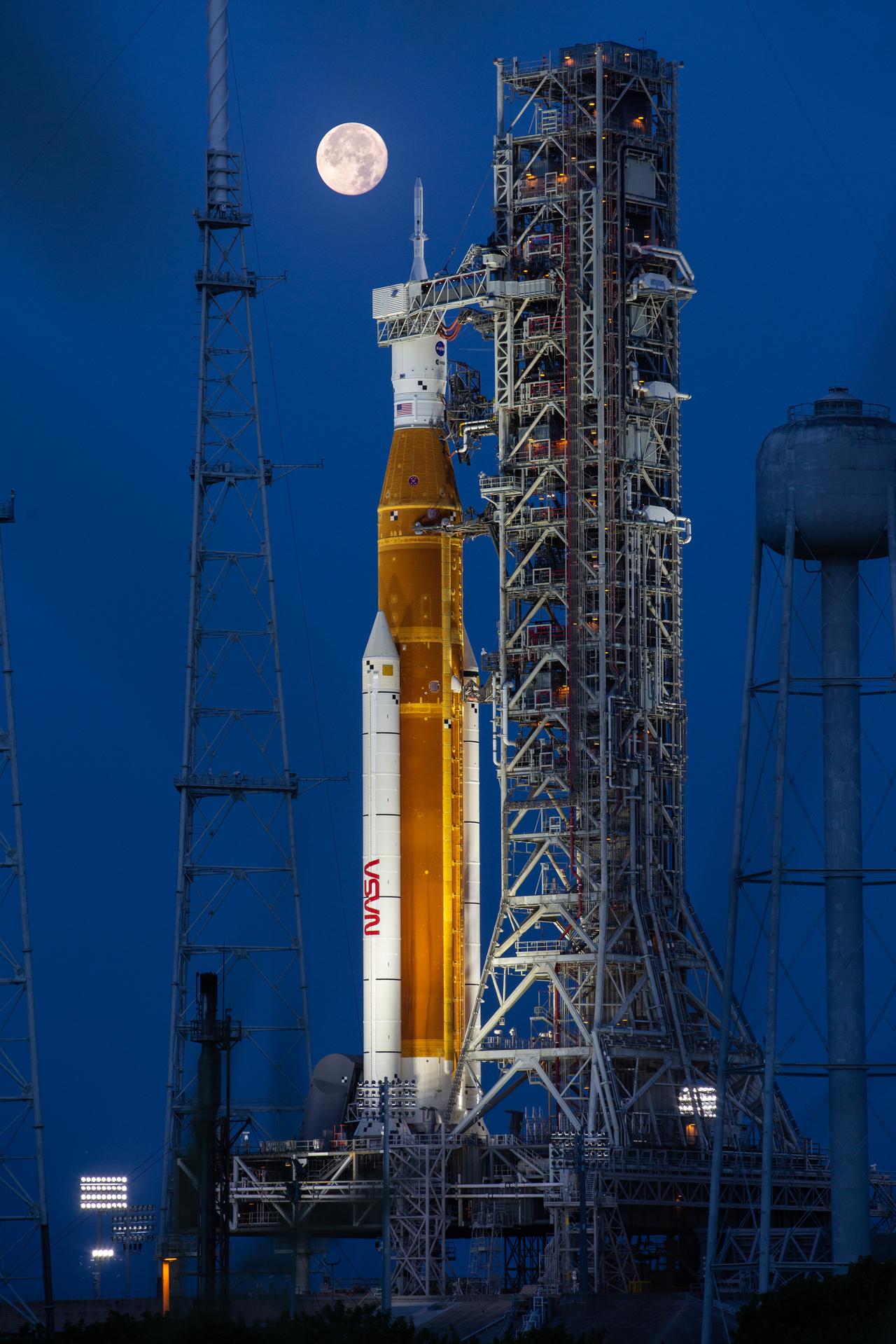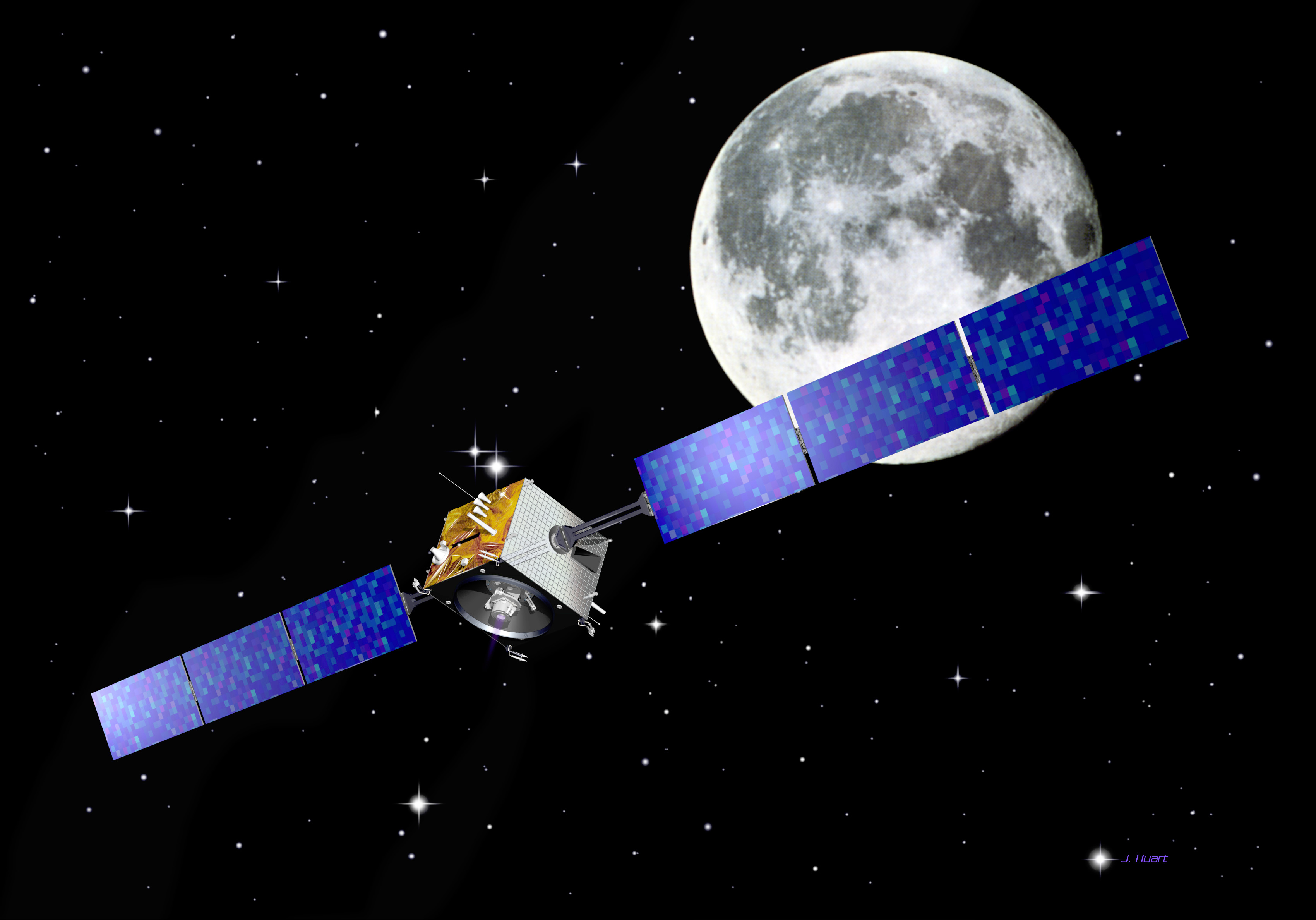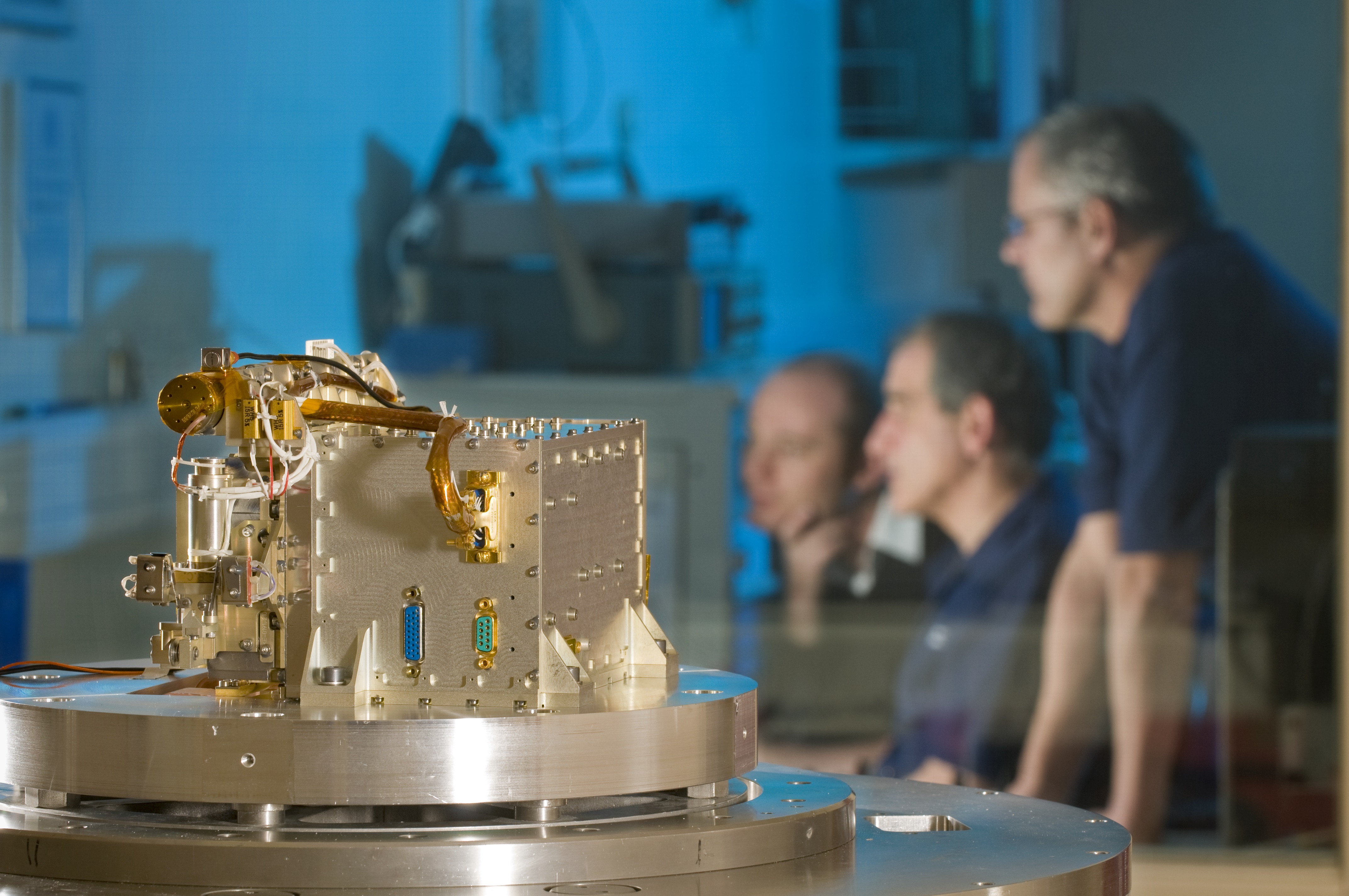4 minute read

Image: The
Space Launch System rocket at Kennedy Space Center. Credit: NASA/Cory Huston
Artemis I – the first in a series of increasingly complex missions – will soon launch from Kennedy Space Center in Florida, marking an exciting step towards NASA's aim to put humans back on the Moon for the first time since the end of the Apollo program in 1972.
Artemis I will be a 42-day uncrewed flight around the Moon and is designed to test the impressive Space Launch System (SLS) rocket. Standing at 98 metres tall, SLS is the most powerful rocket that NASA has ever built and will travel out further than any spacecraft built for humans: 280,000 miles away from Earth. Artemis I will also test the Orion spacecraft that will eventually hold the crew for the second stage of the Artemis programme, planned to launch in 2024.
Perhaps uncrewed missions can't compete in the public imagination with human space exploration but they play an important role in understanding our closest neighbour and helping to prepare for crewed missions. There have been many uncrewed missions in recent years with even more planned. We're proud to have contributed to a few of them!
Peregrine-1

Image: The
PITMS instrument completing testing at RAL Space before being shipped to NASA.
Credit: Open University, STFC RAL Space, NASA Goddard Space Flight Center.
The Peregrine-1 Lunar Lander, part of NASA's Artemis programme, is expected to launch in late 2022.
The lander will include the Peregrine Ion Trap Mass Spectrometer (PITMS), which underwent testing at RAL Space before being shipped to NASA in 2021. PITMS will measure the water and other molecules in the Moon's thin atmosphere throughout a lunar day to improve scientists understanding of the lunar “water cycle". Better understanding of this cycle could support human exploration further into the solar system.
RAL Space was also responsible for the overall mechanical and electronic design, software, and ground support equipment for the Exospheric Mass Spectrometer (EMS), which is an integral part of PITMS.
SMART-1

Image: Artist’s
impression of ESA’s SMART-1 mission. Credit: ESA – J. Huart
SMART-1 was ESA's first mission to the Moon. Launched in 2003, it was originally planned to operate for six months but instead operated for three years before being intentionally crashed into the lunar surface in September 2006.
SMART-1 carried three remote sensing instruments including the Demonstration of a Compact Imaging X-ray Spectrometer – D-CIXS (pronounced D-Kicks), designed and built by RAL Space.
Sometimes when a solar X-ray hits the surface of the Moon, it will interact with an atom in the lunar surface and force it to emit a new X-ray. These are the X-rays that D-CIXS (and C1XS – more on that later!) were designed to measure.
The primary goals of D-CIXS were to obtain a global map of the Moon in X-rays, and to learn more about the levels of rock forming elements, in particular aluminium, magnesium and silicon.
D-CIXS also made observations during SMART-1's 18-month journey to the Moon – gathering data on various astronomical objects including the Crab nebula, various comets and the Earth itself to study their emitted X-ray signatures.
On the same day that SMART-1 crashed, a team from RAL Space travelled to India for a review of D-CIXS' successor, C1XS, which brings us nicely to…
Chandrayaan-1

Image: C1XS undergoing vibration testing at RAL Space. Credit: STFC RAL Space
Launched in October 2008 from the Satish Dhawan Space Centre in India, Chandrayaan-1 was the Indian Space Research Organisation (ISRO's) first mission to the Moon. Five of Chandrayaan-1's on-board instruments were developed in India, with the remaining six provided by international partners.
The Chandrayaan-1 X-Ray Spectrometer (C1XS) was constructed at RAL Space in collaboration with ISRO and was designed to detect X-rays much in the same way as D-CIXS. Both C1XS and D-CIXS were designed to determine X-ray energies very precisely to discover more about the composition of the lunar surface.
Unfortunately, solar X-ray emission is highly variable, and during the SMART-1 and Chandrayaan-1 missions X-ray activity was very low. C1XS only saw 30 bursts of X-rays from the Sun, which meant that its ability to map the lunar surface was very limited.
Chandrayaan-1 ceased operating in August 2009 due to a major failure on the spacecraft. However, C1XS was still able to build on the initial work of D-CIXS and collected valuable data while it could.
More information
Artemis I is scheduled to launch at 08:30 ET (13:30 BST) on Monday 29 August and will be livestreamed on NASA TV (also available on YouTube).
